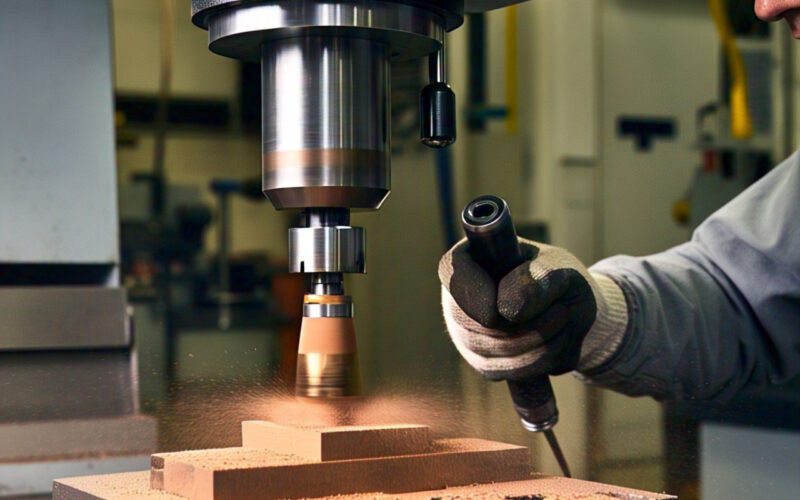Specialized understanding and precise methods are essential for effective cutting of bronze alloys which consist of copper-based materials. The machining process of bronze surfaces demands specific attention to cutting parameters because it exhibits machining behavior that differs substantially from steel and aluminum materials. Bronze milling processes need to handle work-hardening effects of certain alloys even though leaded bronze alloys deliver outstanding machining performance. Modern CNC milling centers using appropriate configurations produce bronze parts that achieve surface finishes below 32 microinches with ±0.001 inches of tolerances on critical dimensions.
The versatility of milling bronze spans numerous industrial applications, from marine engineering to artistic architectural elements. The inability of bronze to create sparks when machined sets it apart from ferrous metals which makes it optimal for explosive environment components. Milled bronze components are recommended for healthcare applications because of their antimicrobial properties whereas these materials are suitable for food processing equipment and medical devices. Machinists who have training in professions need to adjust their approach for bronze milling since each alloy type presents distinct machining behaviors between phosphor bronze, aluminum bronze, silicon bronze and other bronze composition variants.
Material Considerations for Bronze Milling
Using the correct composition of bronze determines how the machining process happens and what capabilities result from finished components. Electric components alongside marine hardware benefit from phosphor bronze because it provides excellent spring properties and corrosion resistance from its 3.5–10% tin mixture with phosphorus. Aluminum bronze alloys which contain 9-12% aluminum together with iron and nickel create strong materials best used for heavy-duty industrial valves and seawater applications. Silicon bronze maintains excellent machining traits from its mixture of 1-3% silicon and zinc elements mainly utilized in artistic castings and architectural elements.
Leaded bronze stands out because its improved machining properties come from 6-8% tin combined with 1-4% lead which creates an internal lubrication system when cutting occurs. The manufacturing of bearings and bushings majorly benefits from these material compositions. The most sophisticated formulation of nickel aluminum bronze combines 4-5% nickel ingredients to improve its resistance against corrosion in harsh marine applications. The entire set of thermal conductivity properties along with work-hardening tendencies and chip formation characteristics plus abrasiveness levels from each alloy must receive attention before starting milling operations.
Advanced Bronze Milling Techniques
High-speed machining approaches deliver the best results when used for bronze material milling. The adaptive toolpaths control the chip load consistency across the milling process and specifically minimize stepover percentages near corners to avoid tool over-engagement. Contemporary CAM software platforms conduct chip thinning operations by calculating feed rates through actual cutting region engagement instead of standard nominal measures. Through trochoidal milling paths slot and pocket operations in bronze alloys have reached improved metal removal rates together with better tool durability because of regulated cutting parameters.
Quality Assurance for Milled Bronze Components
Standardized inspection methods identify if bronze components meet quality objectives for milled production. Coordinate measuring machines deliver complete verification of geometric tolerances as surface roughness testers quantify finish quality measurements. Material composition verification through spectroscopy confirms alloy specifications, particularly important for critical marine and aerospace components. Dye penetrant testing reveals any surface defects that could compromise performance in demanding applications.
Industrial Applications of Precision Milled Bronze
The marine engineering field utilizes milled bronze components because they demonstrate superior seawater corrosion resistance properties. The proper function of propeller shaft bearings, subsea valve bodies together with naval bronze fittings depends on precision milling processes that produce accurate sealing surfaces with right dimensions. The components utilize aluminum bronze or nickel aluminum bronze alloys because these metals combine strength attributes with resistance against ocean environment corrosion.
Conclusion: The Future of Bronze Milling Technology
Manufacturers continue to push the development of precision bronze alloy milling due to increasing production requirements and decreasing tolerance requirements. Specialized coatings and geometry designs dedicated to bronze machining show potential to boost the overall efficiency of the process. Businesses using advanced machine tools with adaptive controls and material sensors will benefit from automated systems which adjust their processes for better quality consistency during production.
As industries face increasing pressure to improve sustainability, bronze milling will benefit from enhanced recycling systems and more efficient machining strategies that minimize material waste. The combination of bronze’s inherent recyclability with advanced manufacturing techniques positions it as an environmentally responsible choice for numerous applications. Companies that master bronze milling technology will find growing opportunities in sectors ranging from renewable energy to advanced marine systems.



